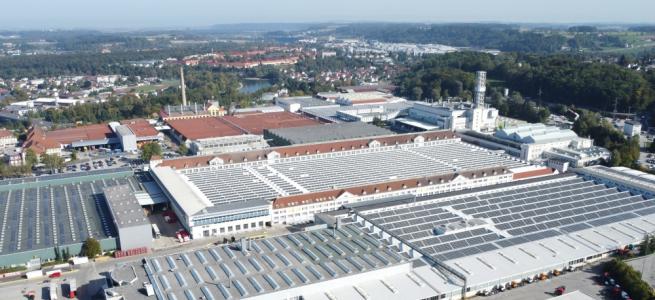From Atoms to Materials: Algorithmic breakthrough unlocks path to sustainable technologies

The atomistic structure of the crystalline material garnet corresponds to the crater on the potential energy surface full of rough mountains, hills, and valleys. Finding it computationally is very hard, but by fixing a mesh on this surface, advanced algorithms and quantum computers can be used to find the lowest lying vertex. A subsequent tweak reveals the garnet structure, which comes with the optimality guarantee.
New research by the University of Liverpool could signal a step change in the quest to design the new materials that are needed to meet the challenge of net zero and a sustainable future.
Published in the journal Nature, the Liverpool researchers have shown that a mathematical algorithm can guarantee to predict the structure of any material just based on knowledge of the atoms that make it up.
Developed by an interdisciplinary team of researchers from the University of Liverpool’s Departments of Chemistry and Computer Science, the algorithm systematically evaluates entire sets of possible structures at once, rather than considering them one at a time, to accelerate identification of the correct solution.
This breakthrough makes it possible to identify those materials that can be made and, in many cases, to predict their properties. The new method was demonstrated on quantum computers that have the potential to solve many problems faster than classical computers and can therefore speed up the calculations even further.
Our way of life depends on materials – “everything is made of something”. New materials are needed to meet the challenge of net zero, from batteries and solar absorbers for clean power to providing low-energy computing and the catalysts that will make the clean polymers and chemicals for our sustainable future.
This search is slow and difficult because there are so many ways that atoms could be combined to make materials, and in particular so many structures that could form. In addition, materials with transformative properties are likely to have structures that are different from those that are known today, and predicting a structure that nothing is known about is a tremendous scientific challenge.
Professor Matt Rosseinsky, from the University’s Department of Chemistry and Materials Innovation Factory, said: “Having certainty in the prediction of crystal structures now offers the opportunity to identify from the whole of the space of chemistry exactly which materials can be synthesised and the structures that they will adopt, giving us for the first time the ability to define the platform for future technologies.
“With this new tool, we will be able to define how to use those chemical elements that are widely available and begin to create materials to replace those based on scarce or toxic elements, as well as to find materials that outperform those we rely on today, meeting the future challenges of a sustainable society.”
Professor Paul Spirakis, from the University’s Department of Computer Science, said: “We managed to provide a general algorithm for crystal structure prediction that can be applied to a diversity of structures. Coupling local minimization to integer programming allowed us to explore the unknown atomic positions in the continuous space using strong optimization methods in a discrete space.
"Our aim is to explore and use more algorithmic ideas in the nice adventure of discovering new and useful materials. Joining efforts of chemists and computer scientists was the key to this success.”
The paper` Optimality Guarantees for Crystal Structure Prediction’ (doi:10.1038/s41586-023-06071-y) is published in the journal Nature.
The research team includes researchers from the University of Liverpool’s Departments of Computer Science and Chemistry, the Materials Innovation Factory and the Leverhulme Research Centre for Functional Materials Design, which was established to develop new approaches to the design of functional materials at the atomic scale through interdisciplinary research.
This project has received funding from the Leverhulme Trust and the Royal Society.


































